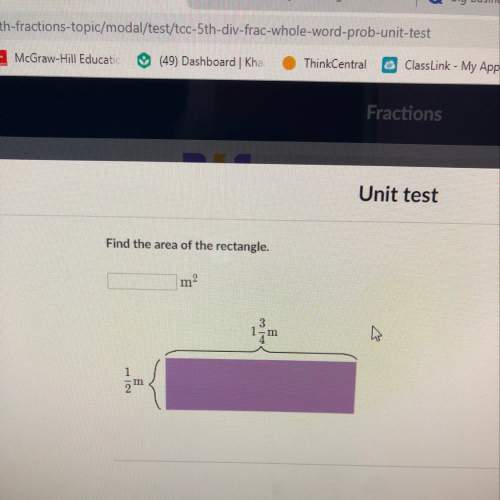
Mathematics, 21.01.2020 03:31 stichgotrich7159
F(x)=(x-6)e^-3x find the interval in which f(x) is increasing, the intervals on which f(x) is decreasing, and the local extrema

Answers: 3


Other questions on the subject: Mathematics

Mathematics, 21.06.2019 14:30, hardwick744
How do the graphs of y = 1/x and y=5/x+6 compare?
Answers: 2

Mathematics, 21.06.2019 15:00, erykp17
Which statement is true? the given sides and angles cannot be used to show similarity by either the sss or sas similarity theorems. the given sides and angles can be used to show similarity by the sss similarity theorem only. the given sides and angles can be used to show similarity by the sas similarity theorem only. the given sides and angles can be used to show similarity by both the sss and sas similarity theorems.
Answers: 1

Mathematics, 21.06.2019 18:00, bobjill1609
The center of the circumscribed circle lies on line segment and the longest side of the triangle is equal to the of the circle.
Answers: 2
You know the right answer?
F(x)=(x-6)e^-3x find the interval in which f(x) is increasing, the intervals on which f(x) is decrea...
Questions in other subjects:


History, 12.04.2021 17:40

Mathematics, 12.04.2021 17:40

Mathematics, 12.04.2021 17:40


History, 12.04.2021 17:40

Social Studies, 12.04.2021 17:40


Business, 12.04.2021 17:40

English, 12.04.2021 17:40

![\bf f(x)=(x-6)e^{-3x}\\\\ -----------------------------\\\\ \cfrac{dy}{dx}=1\cdot e^{-3x}+(x-6)-3e^{-3x}\implies \cfrac{dy}{dx}=e^{-3x}[1-3(x-6)] \\\\\\ \cfrac{dy}{dx}=e^{-3x}(19-3x)\implies \cfrac{dy}{dx}=\cfrac{19-3x}{e^{3x}}](/tpl/images/0463/5021/cb595.png)



